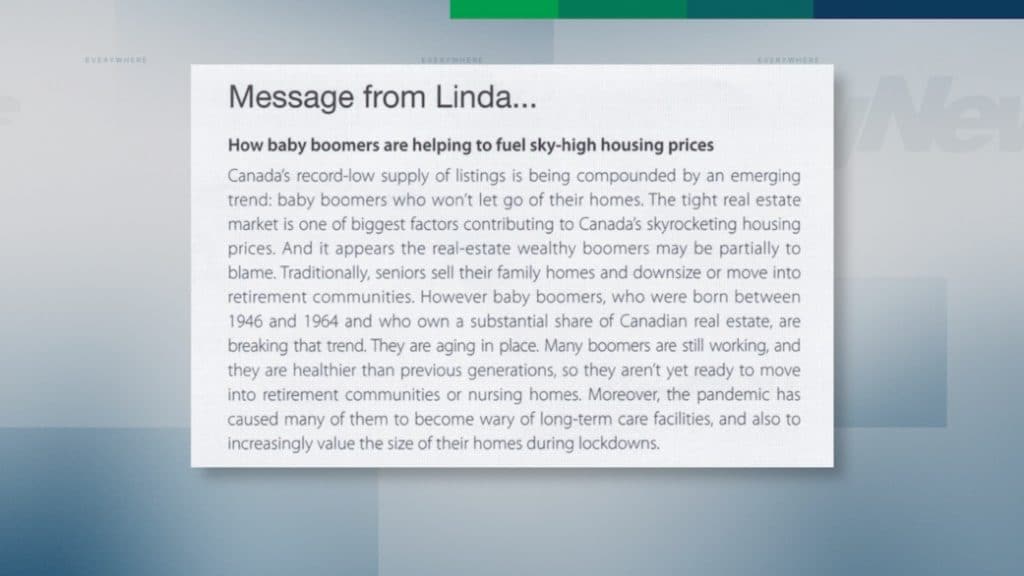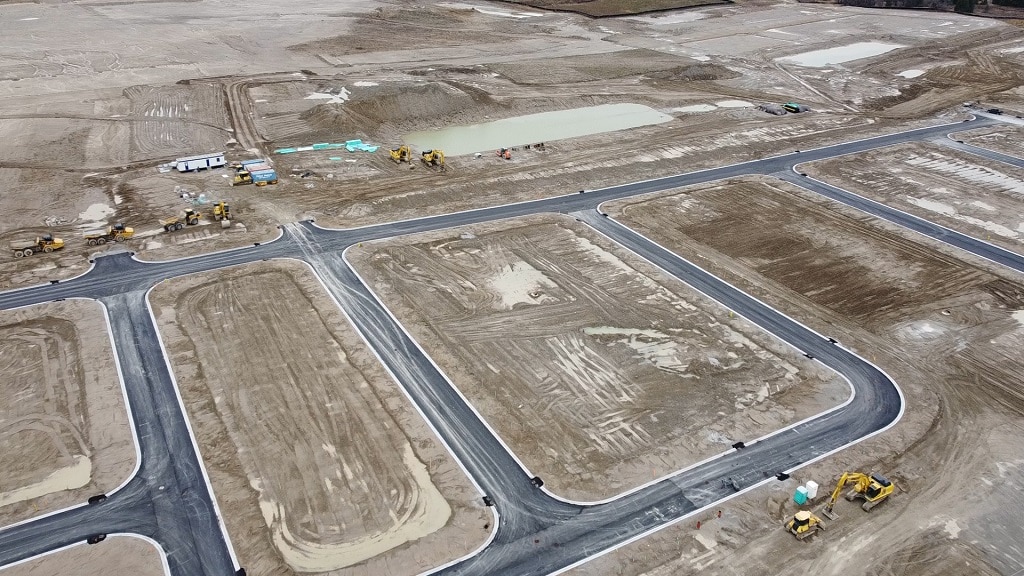‘Nowhere for them to go to’: Baby boomers struggle to downsize as housing construction lags

Posted March 17, 2022 1:34 pm.
Last Updated March 17, 2022 8:52 pm.
With baby boomers having an increasingly difficult time downsizing their homes, a new emerging factor may be having an impact on the price and availability of housing.
“We aren’t seeing the generational turnover of homes that I think many municipal planners had forecasted over the last 10 to 15 years,” said Mike Moffatt, senior director of the Smart Prosperity Institute, a public policy think tank housed at the University of Ottawa.
“I think one of the reasons is there’s nowhere for them to go to,” added Moffatt.
He said municipalities have a strong track record for planning and approving land developments in the form of condo skyscrapers or family-oriented neighbourhoods or detached homes, but very little in-between.
“I think we need to change that.”
Baby boomers not letting go of their homes
Evidence of the trend is beginning to show up in marketing material used by GTA real estate agents as well.
In Oakville, a promotional newsletter from the sales team of local realtor Linda Sadler reads, “Canada’s record-low supply of listings is being compounded by an emerging trend: baby boomers who won’t let go of their homes.”



The publication describes today’s retirees as “healthier” than previous generations and that they “aren’t yet ready” to move into retirement communities.
Sadler told CityNews in many cases, she’s seeing mature adults who are finding themselves trapped by slim pickings in a hot market.
“If you are selling and going to rent then it makes sense but if you are looking to purchase another home you are going to be competing with other people in the market and could be up against 5-10 or more offers on the same home you have picked,” she said.
Additionally, she explained with travel options being diminished over the last two years, due to COVID-19 restrictions, “baby boomers started to renovate their current homes to enjoy spending time at home.”
However, according to Moffatt, housing supply and its associated costs aren’t issues confined to one issue.
“We know that there’s a lot of speculation in the market. We know that people are buying a lot of second homes,” he said.
Impact of population growth on housing
At the same time, in 2020, Statistics Canada said there were over 358,000 births in the country. That same year, according to Immigration, Refugees and Citizenship Canada, immigration slowed due to the pandemic with 184,500 newcomers becoming permanent residents. However, the ministry said in 2021 that the Canadian government reached its target of 401,000 new permanent residents.
Moffatt said with a large portion of that growth taking place in Ontario, we’re simply not building fast enough to keep up.
“We forecast that at a minimum over the next 10 years that Ontario will need one million net new homes, and we think this is an absolute minimum.”
Similarly, the Ontario Housing Affordability Task Force published a report in February of 2022 calling for a target of 1.5 million new homes to be built in the same period.
“To put that into context, that’s about 150,000 a year and Ontario traditionally builds about 75,000 a year. So, according to the provincial task force, we need to double the rate of home building over the next 10 years to keep up with population growth,” said Moffatt.
Meanwhile, the president of the Building Industry and Land Development Association (BILD), said our planning and approval system is outdated.
“We need greater density, We need to move projects from concept to shovel-ready quicker,” said Dave Wilkes, CEO of BILD.
He’s calling for more digitization of the approval process and for more municipalities to cut back steps he describes as unnecessary.
“That adds excessive amounts of time to bring a project to market,” said Wilkes, adding, “it currently takes 10 to 11 years for a project to be completed, a lot of that which is approval time.”
As for who is responsible to create a housing plan that anticipates and responds or emerging trends, Moffatt said the onus falls on all three levels of government to tackle housing affordability, not seniors who aren’t ready to sell.
“If you bought the house, it is yours. If you want to move into something else, that’s your right and if you want to stay there until you’re 110 years old, that’s absolutely your right as well.”








